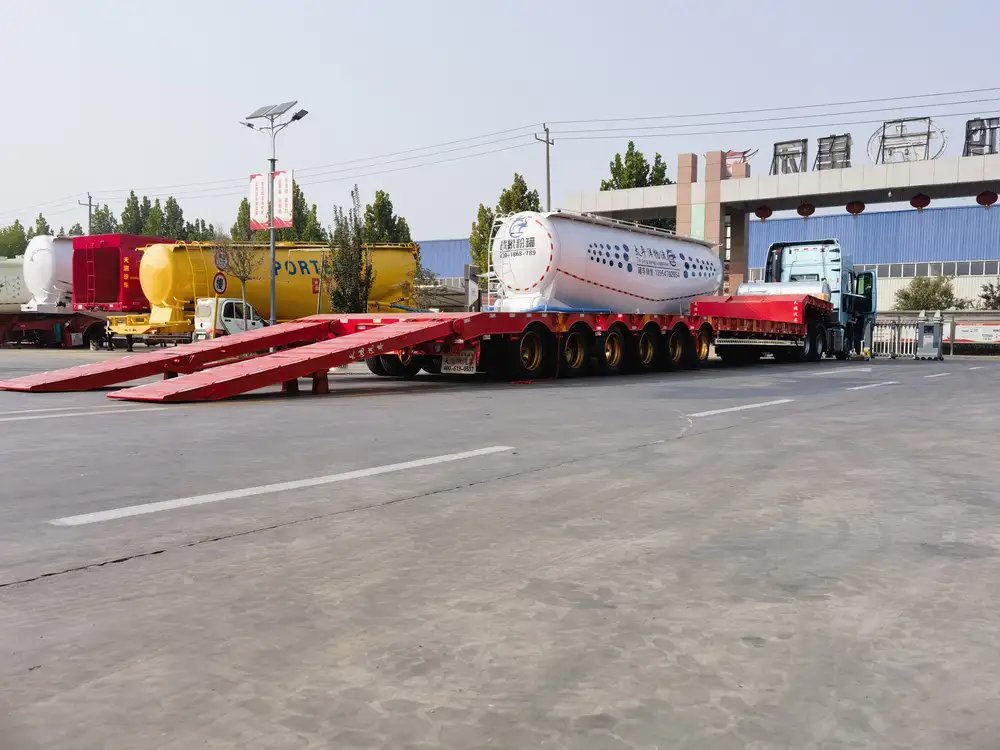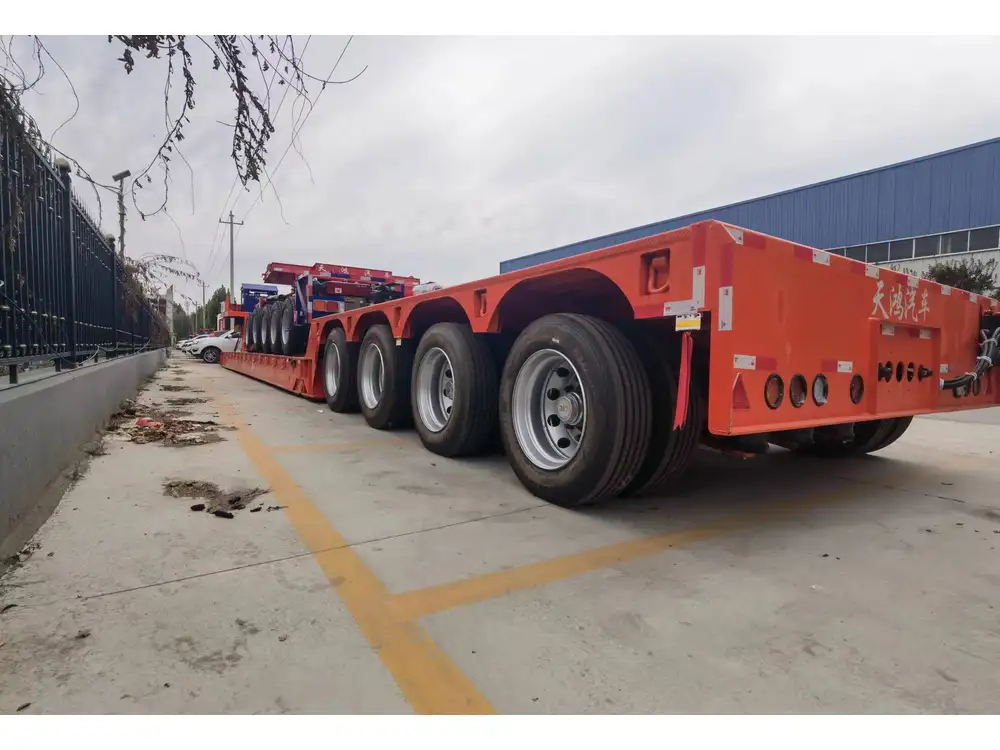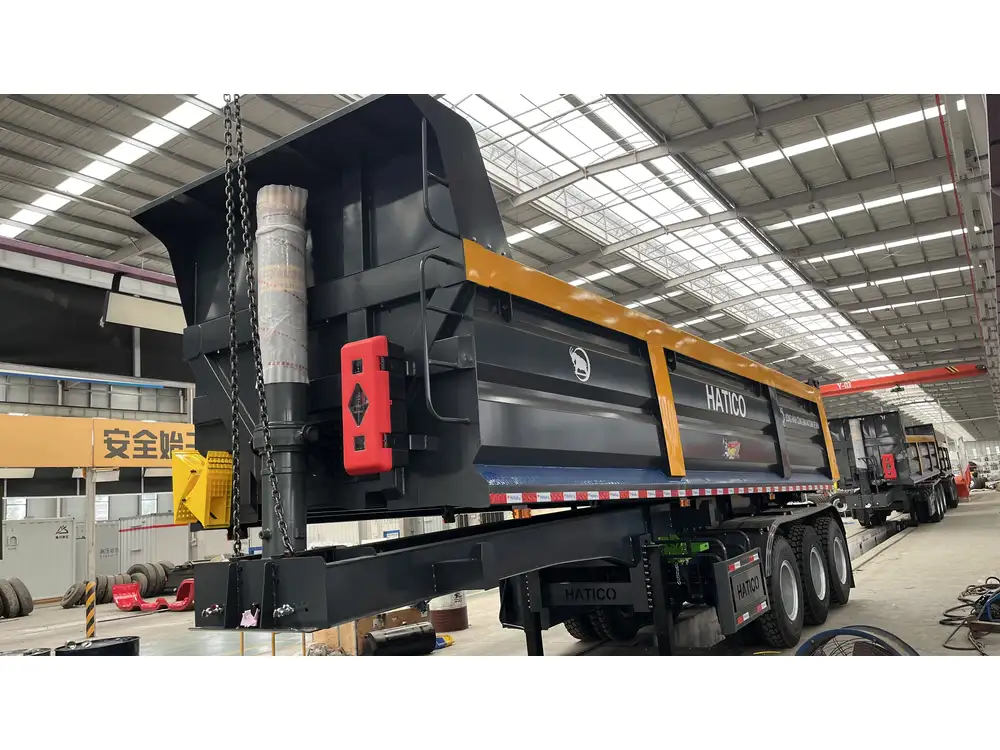When it comes to logistics and transportation, knowing the weight capacity of semi-trailers is crucial for efficient operations. In this article, we delve into the specifics regarding how many tons a semi-trailer can carry, providing you with the knowledge necessary to make informed decisions whether you’re a logistics manager, an owner-operator, or a fleet administrator.
Semi-Trailer Weight Limits: The Basics
Semi-trailers, as integral components of freight transport, have specific weight capacities governed by factors such as design, materials used, and federal regulations. Understanding these weight limits is essential not only for legal compliance but also for ensuring safety on the road.
Federal Regulations Overview
In the United States, the Federal Highway Administration (FHWA) enforces weight limits outlined in the Federal Motor Carrier Safety Administration (FMCSA) regulations. The maximum weight for a standard semi-trailer is typically determined by the following parameters:
| Factor | Limit |
|---|---|
| Single Axle | 20,000 lbs (9,072 kg) |
| Tandem Axle | 34,000 lbs (15,422 kg) |
| Gross Vehicle Weight (GVW) | 80,000 lbs (36,287 kg) |

Understanding the Axle Configuration
The configuration of axles on a semi-trailer directly influences its load capacity. Here’s a breakdown of common axle types:
- Single Axle: Supports a maximum weight of 20,000 lbs.
- Tandem Axle: Can legally carry up to 34,000 lbs.
- Tri-Axle: Often seen in heavy haul applications, can support over 40,000 lbs.
Calculating the total permissible weight based on the number of axles helps in optimizing loads without exceeding legal limits.
Factors Influencing Semi-Trailer Capacity
Several influential factors determine how many tons a semi-trailer can carry effectively:
1. Trailer Type
Different types of semi-trailers are designed for specific cargo, impacting their weight capacities:
| Trailer Type | Typical Capacity | Common Uses |
|---|---|---|
| Flatbed Trailers | Up to 48,000 lbs | Building materials, heavy machinery |
| Dry Van Trailers | Up to 45,000 lbs | Boxed goods, retail inventory |
| Reefer Trailers | Up to 43,000 lbs | Perishable goods like foodstuffs |
| Lowboy Trailers | Up to 40,000 lbs | Heavy equipment, oversized loads |

2. Weight Distribution
Even within the legal maximum, efficient weight distribution across axles is critical for maintaining stability and reducing road wear. Overloading any single axle can lead to costly fines, safety hazards, or vehicle damage.
3. Material and Design
Manufacturers design semi-trailers using a variety of materials. Lightweight materials like aluminum can reduce the weight of the trailer itself, allowing for a greater payload. Conversely, heavier materials might enhance durability but reduce load capacity.
Calculating Payload Capacity
To determine how many tons a semi-trailer can carry, understanding the calculation of payload capacity is key.

Step-by-Step Calculation
- Identify the Gross Vehicle Weight (GVW): The GVW is the maximum weight of the vehicle when fully loaded.
- Subtract the Trailer Weight: This is the weight of the trailer itself (tare weight).
- Result Equals the Payload Capacity: The formula is as follows:
- Payload Capacity (lbs) = GVW – Trailer Weight (lbs)
Example Calculation
Let’s say you have a semi-trailer with the following specifications:
- GVW: 80,000 lbs
- Trailer Weight: 15,000 lbs
Using the formula:
- Payload Capacity = 80,000 lbs – 15,000 lbs = 65,000 lbs
- Converted to tons = 65,000 lbs ÷ 2,000 lbs/ton = 32.5 tons
Therefore, this trailer can effectively carry approximately 32.5 tons of cargo.
Key Considerations for Load Management

1. Cargo Type
Different types of cargo may require special handling or equipment. Fragile goods require careful stowage and may enforce limits on the total weight that can be safely transported.
2. State Regulations
In addition to federal limits, various states have their laws concerning weight exemptions and restrictions. Always check the local regulations to avoid penalties.
3. Seasonal Variations
Certain bridges and roads impose lower weight limits during specific seasons, especially in areas prone to road damage from ice or flooding. Keep this in mind when planning deliveries.

Common Myths About Semi-Trailer Weight Capacity
Misconceptions about weight capacities can lead to errors in calculations that harm both budget and safety. Here are some common myths:
Myth 1: More Axles Always Mean More Capacity
Fact: While more axles can distribute weight better, they do not necessarily allow for more cargo if the legal GVWR remains the same.
Myth 2: Maximum GVWR Equals Maximum Payload
Fact: The actual payload must factor in the weight of the truck, trailer, and cargo. Overloading can lead to severe penalties.

Myth 3: All Trailers Are Built Equal
Fact: Different trailers are designed for specific types of cargo, which affects weight limits due to structural features and material.
Importance of Compliance and Safety
Understanding and adhering to weight limits isn’t just essential to avoid fines; it’s pivotal for ensuring personal and public safety on the road. Overloaded trailers can lead to:
- Increased stopping distances
- Difficulty in maneuvering
- Higher potential for tire blowout
- Compromised stability
Safety Practices
To optimize safety and performance, consider the following practices:
- Conduct regular maintenance checks, especially focusing on tires and brakes.
- Train drivers on safe loading techniques.
- Use technology, such as load sensors, to monitor weight distribution.

Conclusion: Optimize Your Semi-Trailer Usage
The amount of tons a semi-trailer can carry varies based on several interrelated factors, including axle configuration, trailer type, and legal regulations. By thoroughly understanding these elements, you can streamline your logistics operations, improve efficiency, and ensure compliance with safety regulations.
In transporting and logistics, weight matters. Equip yourself with the knowledge of how many tons a semi-trailer can carry and make informed decisions that enhance your operational effectiveness. Stay compliant, stay safe, and maximize your payload capabilities effectively.
For any further inquiries into semi-trailer load capacities or manufacturing details, please feel free to reach out.



